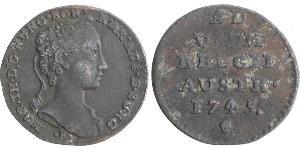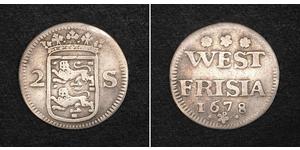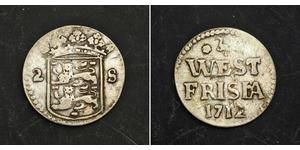(продана за $102.0)
1680, Liege (Bishopric). Interesting Copper Mereau (Communion Token) Coin. F-VF!
Mint Year: ca. 1680 Mint Place: Bishopric of Liége (Belgium) Denomination: Mereau (Communion Token) References: Renesse-72, Eklund-86, Dengis Me.01-06. Condition: Pierced and polished from wearing, otherwise F-VF! Material: Copper Diameter: 21mm Weight: 4.64gm
Obverse:Skull and crossbones with "ANNIVERSARIUM" above.
Reverse: Crossed bones with fireballs above and below, "ECCLESI. LEODI." in legends around.
The Bishopric of Liège or Prince-Bishopric of Liège was a state of the Holy Roman Empire in the Low Countries in present Belgium. It acquired its status as a prince-bishopric between 980 and 985 when Bishop Notger, who had been the bishop of Liege since 972, acquired the status of Prince-Bishop after he received secular control of the County of Huy from the emperor . The Prince-Bishopric belonged from 1500 on to the Lower Rhenish-Westphalian Circle. It was headed by the Prince-Bishop of Liège. Its territory included most of the present Belgian provinces of Liège and Limburg, and some exclaves in other parts of Belgium and the Netherlands. The capital was Liège (which, as the bishopric, is Lüttich in German and Luik in Dutch). It briefly became a republic (the Liège Republic) from 1789 to 1791, before reverting to a Prince-Bishopric in 1791 then being annexed by France in 1795.
Maximilian Heinrich of Bavaria (8 October 1621 - 3 June 1688) was the third son and fourth child of Albert VI, landgrave of Leuchtenberg and his wife, Mechthilde von Leuchtenberg. In 1650, he was named Archbishop of Cologne, Bishop of Hildesheim and Bishop of Liège succeeding his uncle, Ferdinand of Bavaria. In 1683, he was named Bishop of Münster, but Pope Innocent XI refused to confirm this nomination. He died in 1688 and was succeeded by Joseph Clemens of Bavaria.
No reserve.

|
Добавил:
anonymous 2021-03-17 |
1 Liard Австрийские Нидерланды (1713-1795) Медь
в группе 4 монет / 4 цен
⇑
2 Stuiver Нидерланды Серебро
в группе 2 монет / 2 цен
⇑








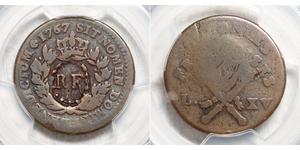


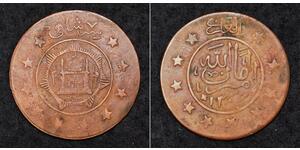



-300-150-P8gsHgTy6VEAAAGTRmDWdZPt.jpg)
